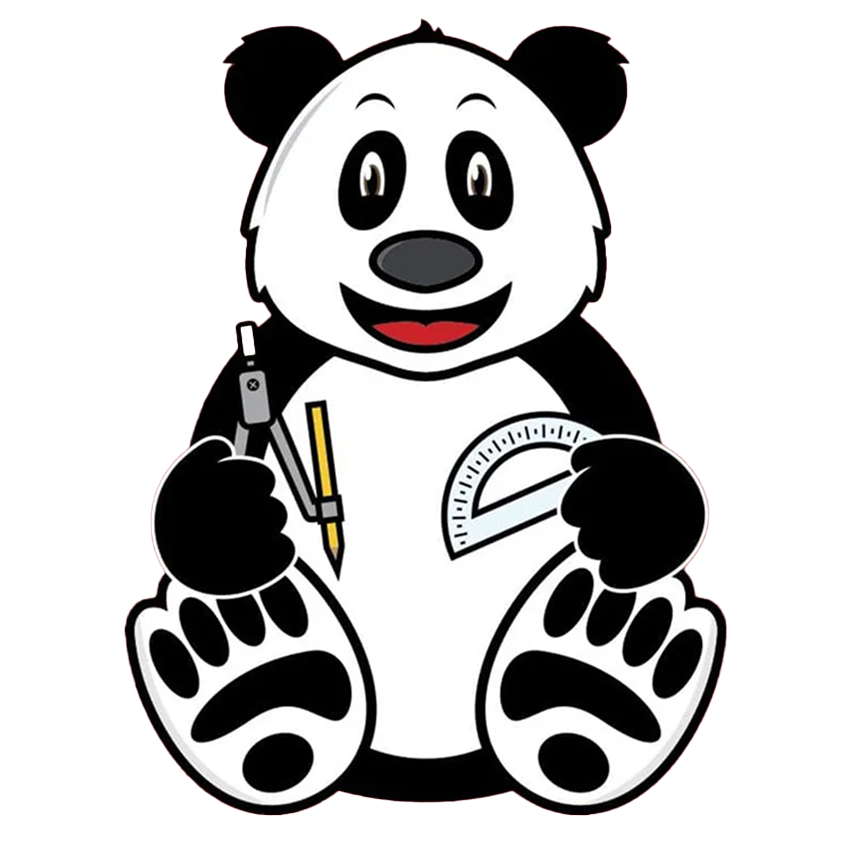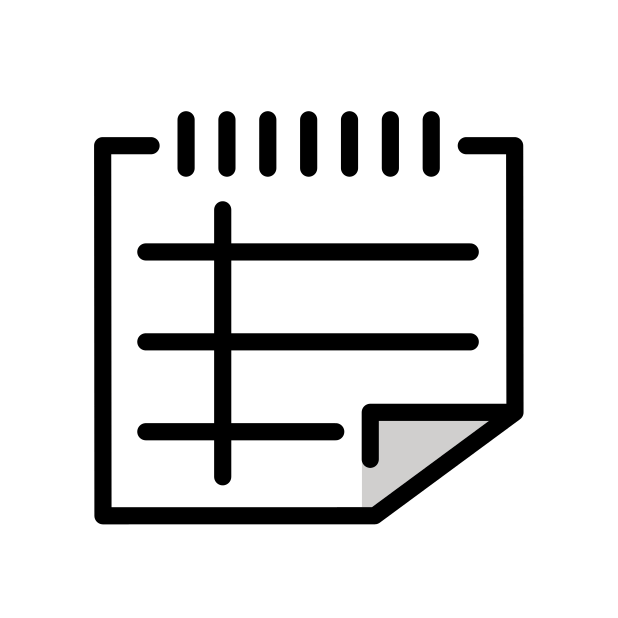Secular

Math Homeschool Curriculum Skills List | Secular Fifth Grade
Math skills are introduced with manipulative activities that help the child see and work through the concept in a tactile manner. This is followed by an individual activity or practice worksheet (included in the lesson).
Whole Numbers and Sets
- Skip count by different increments.
- Recognize, read aloud, and write the numerals in order from zero through hundred millions.
- Understand and identify place value for each digit in numbers to the trillions place.
- Apply expanded notation to model place value through the trillions place.
- Identify the value of Roman numerals.
- Identify even and odd numbers.
- Identify the number of digits in a number.
- Identify a number that comes after a given number.
- Identify a number that comes before a given number.
- Identify a number that comes between two given numbers.
- Identify one, ten, one hundred, and one thousand more than a given number.
- Round numbers to a given place value.
- Round a repeating and non-repeating decimal number.
- Write numbers in standard, expanded, and word form.
- Estimate sums and differences up to 100.
- Continue to develop the ability to understand and use ordinal numbers and words.
- Apply ordinals to daily experiences.
- Compare sets and determine if one set is equal to, greater than, or less than the other set.
- Use comparison symbols (<, =, >).
- Develop mental math skills.
- Write dictated numbers.
- Express a relationship between numbers as a ratio.
- Understand the difference between a prime and composite number.
- Write the prime factorization of a composite number.
- Find the greatest common factor of two numbers.
- Find the least common multiple.
Patterns and Operations: Algebraic Thinking
- Review addition facts 0-20.
- Review subtraction facts 0-20.
- Write addition and subtraction fact families.
- Understand that addition and subtraction are inverse operations.
- Create mathematical equations.
- Identify a missing addend.
- Use manipulatives to model and solve multiplication problems.
- Recall multiplication facts 0-12.
- Recall division facts 1-12.
- Use manipulatives to model and solve division problems.
- Divide, and show a remainder as a fraction of the divisor.
- Learn and apply the divisibility rules.
- Understand that multiplication and division are inverse operations.
- Use inverse relationships to check answers.
- Copy, extend, describe, and create simple repetitive patterns.
- Identify a missing symbol in a repeating pattern.
- Identify a missing term in a sequence.
- Use a variable to represent an unknown amount.
- Use variables in contextual situations.
- Evaluate an algebraic expression.
- Write an algebraic expression for a word phrase and a word problem.
- Use inverse relationships to solve for a variable in an equation.
- Write an equation to represent a model.
- Use digits and symbols to represent mathematical statements.
- Identify and write a function rule.
- Add, subtract, multiply, and divide multi-digit numbers.
- Use addition, subtraction, multiplication, and division to solve one- and two-step word problems.
- Recognize and apply the Associative Property of Addition.
- Recognize and apply the Associative Property of Multiplication.
- Recognize and apply the Commutative Property of Addition.
- Recognize and apply the Commutative Property of Multiplication.
- Recognize and apply the Identity Property of Multiplication.
- Recognize and apply the Zero Property of Multiplication.
- Apply the Addition Property of Equality.
- Apply the Subtraction Property of Equality.
- Apply the Identity Property of Zero.
- Use the Distributive Property to solve for a variable.
- Apply knowledge of the order of operations in math.
- Use the order of operations to simplify an expression.
- Simplify exponential numbers.
Geometry
- Identify, name, and describe polygons.
- Identify angles, vertices, faces and edges.
- Classify three-dimensional figures according to the number of faces, vertices, and edges.
- Classify a triangle as equilateral, isosceles, or scalene.
- Identify, name, describe, and build three-dimensional shapes.
- Identify the interior and the exterior of a shape.
- Draw a shape according to a given measurement and calculate the perimeter.
- Calculate the area of a regular and an irregular shape using a formula.
- Find the perimeter of a regular and an irregular shape.
- Find the perimeter and area of a composite figure.
- Calculate the volume of a rectangular prism.
- Identify and draw congruent shapes, lines, or line segments.
- Identify and draw horizontal and vertical line segments.
- Identify and draw parallel and perpendicular line segments.
- Identify the diameter and radius of a circle.
- Calculate the circumference of a circle with the given diameter.
- Draw angles of a given measurement.
- Identify angles: right, acute, obtuse.
- Use a protractor.
- Combine geometric shapes to make new shapes.
- Sort shapes and explain the sorting rule.
- Classify objects according to color, shape, size, function, likeness, and differences.
- Identify and draw a horizontal and vertical line of symmetry.
- Identify similar shapes.
- Create symmetrical designs.
- Recognize or draw a reflection over a line of symmetry.
- Make a net for polyhedra.
- Recognize and draw transformations in geometry: rotation, reflection, translation.
Measurement and Estimation
- Use a ruler to measure inches, feet, yards, and centimeters.
- Measure and draw line segments to the nearest sixteenth inch.
- Measure and draw line segments to the nearest centimeter.
- Order objects by length or height.
- Arrange multi-digit numerals from least to greatest.
- Use digital and analog clocks to tell, write, and show time to the nearest minute.
- Show times using fractional parts of an hour.
- Arrange events in the correct order.
- Compare events according to duration.
- Solve problems using a calendar.
- Write a date in word and digital form.
- Read a Fahrenheit thermometer.
- Identify units of capacity: cup, pint, quart, gallon, teaspoon, tablespoon, liters, and milliliters.
- Make direct comparisons using measurable attributes such as length, weight, and capacity.
- Understand that one item may hold more or less than another item.
- Estimate the capacity of containers.
- Measure dry and liquid ingredients.
- Calculate equivalent measurements.
- Use a unit multiplier to convert measurements.
- Identify a dozen and half dozen.
- Say, write, and compute decimal numbers.
- Recognize and round decimal numbers to the nearest thousandth.
Reasoning, Problem Solving, and Communication
- Make a prediction, and test to determine its accuracy.
- Use simple logic to solve a problem.
- Analyze and interpret data using logical reasoning.
- Use a graphic organizer to demonstrate a decision-making process.
- Describe how the problem was solved.
- Determine whether a solution to a problem is reasonable.
- Identify the questions asked in a problem.
- Recognize when additional information is required to solve a problem.
- Write a step-by-step description of a process.
- Draw a picture to illustrate a mathematical word problem.
- Answer a riddle.
Money
- Identify pennies, nickels, dimes, quarters, and dollar bills.
- Find the value of a set of coins.
- Write the value of a set of coins as a fraction of a dollar and as a decimal number.
- Write amounts of money using a dollar sign and a decimal point.
- Compare monetary amounts using an inequality symbol.
- Select coins for a given amount.
- Pay for items and make change using coins and bills.
- Add and subtract money amounts using a decimal to represent the monetary values.
- Compare monetary values and determine if one set is equal to, greater than, or less than the other set.
- Solve word problems using money.
- Understand that money is accepted as final payment for goods and services.
- Identify the person on United States currency.
Fractions
- Make models that represent given fractions.
- Recognize fractional parts of a given whole.
- Write a fraction to represent part of a whole.
- Compare fractions.
- Identify equivalent fractions.
- Expand a fraction to find equivalent fractions.
- Use number lines to add fractions with like denominators.
- Reduce a fraction to lowest terms.
- Identify numerator and denominator.
- Locate rational numbers on a number line.
- Use words to write a mixed number.
- Write a mixed number to represent a picture.
- Convert an improper fraction to a mixed number.
- Rename a pair of fractions using their least common denominator.
- Add and subtract fractions with like and unlike denominators.
- Multiply and divide fractions.
- Represent fractions with a circle graph.
- Convert fractions and decimal numbers to percents.
Decimals
- Add, subtract, multiply, and divide decimal numbers.
- Calculate the cost per serving.
- Divide with a decimal remainder.
- Represent money with a dollar sign and decimal point.
Statistics and Probability
- Collect, sort, and tally data.
- Find the range, mean, median, and mode of a set of data.
- Solve problems using graphs, charts, and tables.
- Make an inference, and experiment to test the inference.
- Predict the most likely or least likely outcome in a probability experiment.
- Understand theoretical and experimental probability.
- State probability as a fraction.
- Make arrangements that represent the number of possibility combinations of items from a set.
Graphing
- Use simple picture graphs, bar graphs, line graphs, circle graphs, tables, and charts to solve problems and record information.
- Compare information and draw conclusions using graphs.
- Collect, organize, describe, and display data using Venn diagrams.
- Plot ordered pairs on a coordinate plane.
- List coordinates that connect to make a design or picture.
- Recognize a positive or negative slope on a line graph.
Calculators and Computers
- Demonstrate how a calculator works.
- Use a simple calculator to add, subtract, multiply, and divide sets.

What Makes Our Curriculum Stand Out?
We are proud to offer an all-in-one solution! No need to piece together resources from different places. Our curriculum provides fully-planned lessons that cover all subjects, ensuring a well-rounded education. It also includes step-by-step instructions for teaching your child!

 Language Arts
Language Arts
 Mathematics
Mathematics
 Social Studies
Social Studies
 Science
Science
 Physical Development & Fitness
Physical Development & Fitness
 Art
Art
 Music
Music
 Character Development
Character Development


